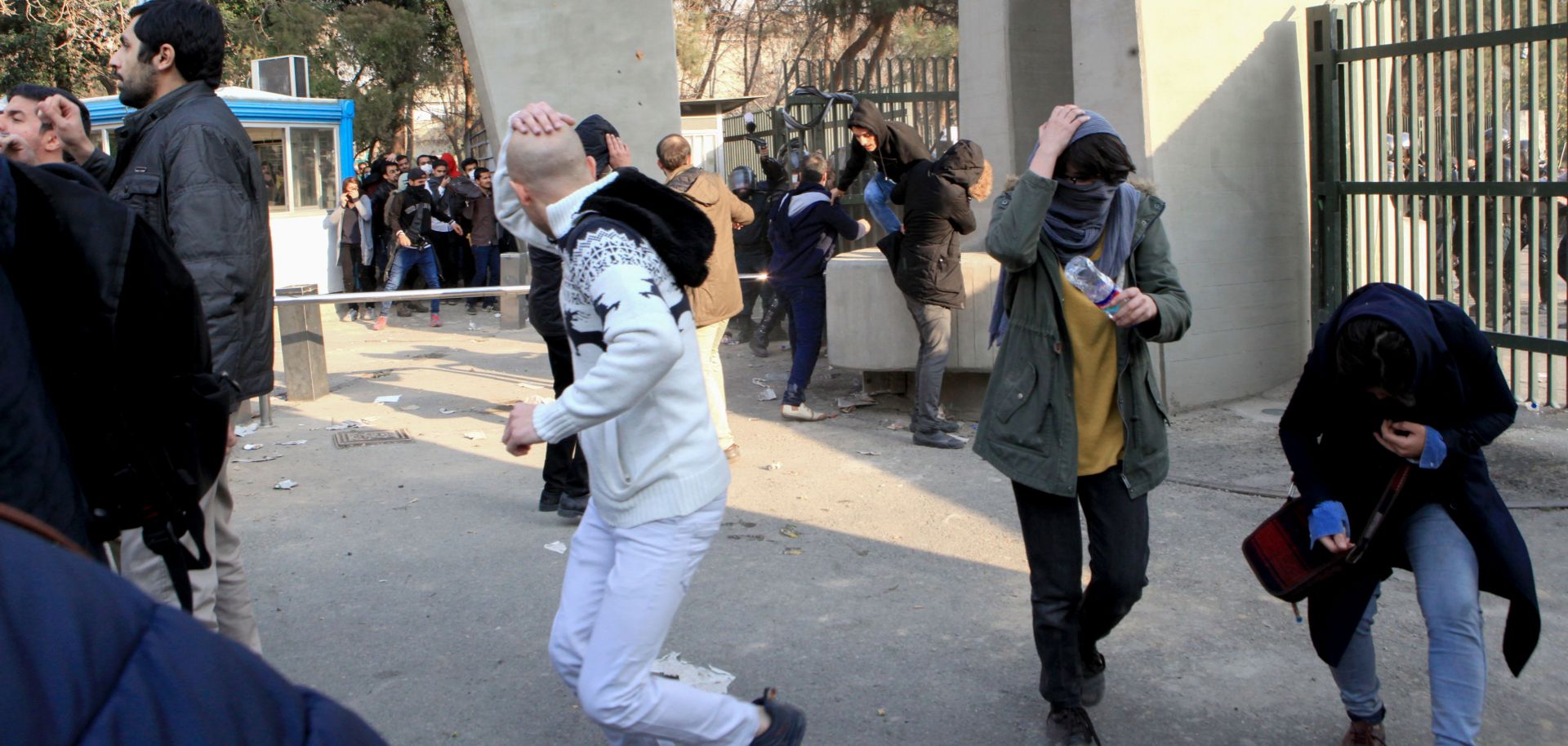ASSESSMENTS
When the Protests Die Down, Iran's Economic Problems Will Live On
Jan 4, 2018 | 23:52 GMT

Iranian students run for cover from tear gas at the University of Tehran during a demonstration driven by anger over economic problems, in the capital Tehran on December 30, 2017. Students protested in a third day of demonstrations, videos on social media showed, but were outnumbered by counterdemonstrators.
(STR/AFP/Getty Images)
Highlights
- Some of the grievances behind the recent wave of protests in Iran, such as disappointment with the nuclear deal and low oil prices, will remain beyond the government's power to change.
- Unstable food prices, decreasing purchasing power and high rates of unemployment and underemployment will continue to pose problems for everyday citizens across the country.
- The sensitive reform measures necessary to overhaul subsidy systems, labor laws and business contracts, which are as much political as they are economic, will probably set off more unrest in the future.
Subscribe Now
SubscribeAlready have an account?
